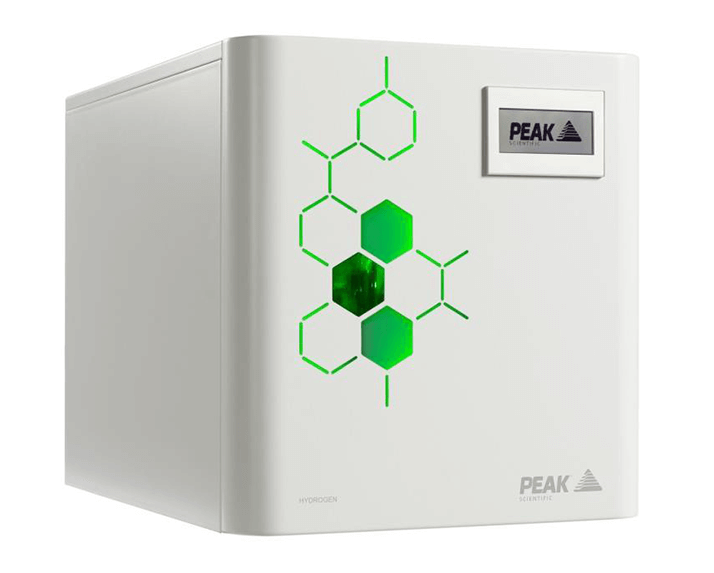Introduction
Gas generators offer a guaranteed round the clock supply of consistently pure gas, however it is important to choose the correct configuration for your GC system. Generators produce gases at a variety of flow rates and purities, depending on the purification system they employ.

Hydrogen generators
 Precision Range - Hydrogen Gas Generator
Precision Range - Hydrogen Gas GeneratorHydrogen for detectors
The most commonly used GC detector worldwide is the flame ionisation detector (FID), which uses hydrogen as the fuel gas. Flame photometric detectors (FPD), pulsed flame photometric detectors (PFPD) and nitrogen phosphorous detectors (NPD) also require hydrogen. By checking the flow rate of hydrogen used by each detector, you can easily calculate your total hydrogen requirement for your GC detectors.
Hydrogen for carrier gas
If you are considering using hydrogen for carrier gas, you will need to calculate the total flow requirement of your GC method(s) and add this to your detector hydrogen requirement (if applicable). The total flow information can be found in your instrument software, on the GC display panel, or on a method report. Otherwise you can calculate the total flow by adding together the column flow, split flow and septum purge flow. If you are currently using helium carrier gas and are planning to translate your methods to hydrogen carrier gas, you can use method translation software to calculate your hydrogen flow rate for the translated method. When using the same column, with adjusted pressure, the hydrogen requirement is typically around 1.25 x the helium requirement.
Which system?
Depending on the manufacturer, there is typically a choice between palladium, pressure swing adsorption (PSA) and desiccant hydrogen driers. Each has its relative pros and cons in terms of purity, longevity and price. For detector supply, all three purification systems are suitable. For carrier gas, people usually opt for palladium or PSA systems since these are completely regenerative driers, compared with desiccant systems, which must be periodically replaced or reconditioned.





